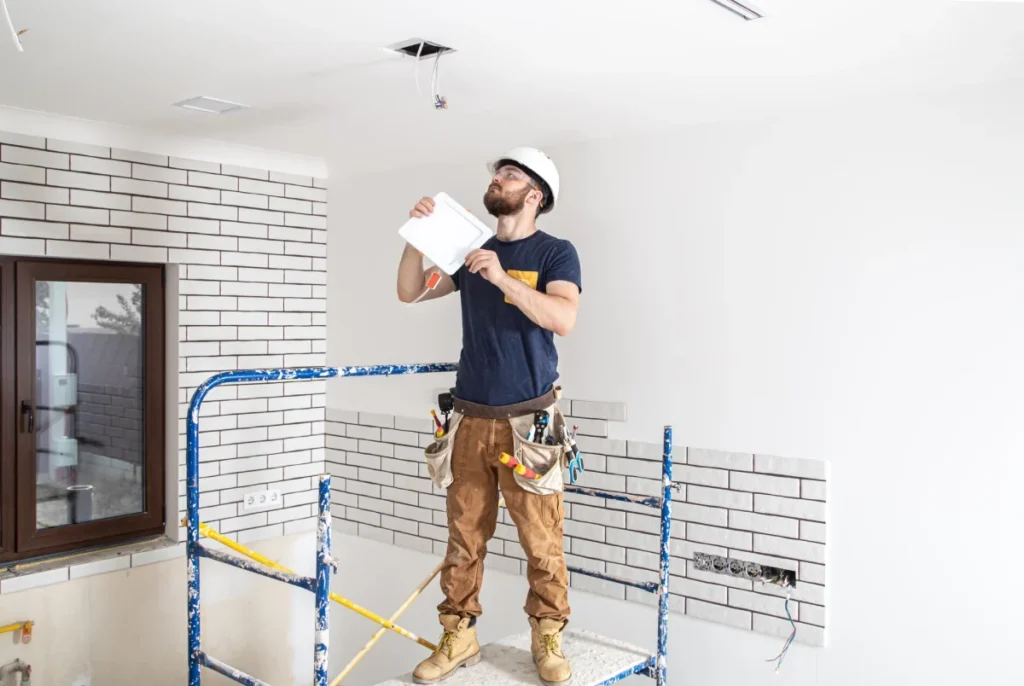In the world of construction and remodeling, it’s common for questions to arise regarding the differences between the terms “renovation” and “rehabilitation.” Although both refer to work on properties, they have distinct purposes and scopes.
If you’re considering work on your home or building, understanding these concepts is crucial to making the right decision.

What is a renovation?
A renovation is a modification made to a property with the aim of modernizing or improving its aesthetics and functionality. This type of intervention tends to be more superficial and does not impact the building’s structure. Several types of renovations can be distinguished:
- Aesthetic renovations: Changes aimed at improving the appearance of the property, including repainting walls, changing flooring or tiles, and updating decor.
- Functional renovations: Aim to improve the use of space, for example, by redistributing rooms or reconfiguring a kitchen layout for greater functionality.
- Partial renovations: These focus on specific areas of the home, such as the bathroom or kitchen, without altering other parts of the property.
- Full renovations: These involve a complete transformation of the space, which can include everything from updating finishes to a total reconfiguration of the interior spaces.
The primary purpose of a renovation is to enhance the comfort, functionality, and design of a home. Renovations are more common in properties in good structural condition but in need of aesthetic or functional updates.
What is rehabilitation?
A rehabilitation, on the other hand, has a completely different focus. It involves a set of works aimed at restoring and improving the structural and functional conditions of a building that has deteriorated.
This type of intervention is more extensive and complex, often including structural reinforcements, safety improvements, and, in many cases, ensuring the preservation of a building’s historical value.
Several types of rehabilitation exist:
- Structural rehabilitation: Involves repairing significant damage to the building’s structure, such as foundation cracks, settlement issues, or replacing deteriorated structural elements.
- Energy rehabilitation: Aims to improve the building’s energy efficiency by installing thermal insulation, upgrading windows, or updating heating and cooling systems.
- Historical rehabilitation: Focuses on preserving architectural elements of historical or cultural value, ensuring the building retains its original character while modernizing other aspects.
Unlike renovations, rehabilitations generally require more complex permits, such as major building permits, due to the nature of the work involved.
Additionally, in many cases, architects and engineers are needed to ensure the project’s safety and feasibility.
What distinguishes renovation from rehabilitation?
To clarify, here is a summary of the key differences between the two concepts:
- Scope: Renovations focus on aesthetic or functional improvements, while rehabilitations address structural and safety issues.
- Permits: Simple renovations require minor permits, whereas rehabilitations, given their structural nature, often need major permits.
- Time and cost: Rehabilitations are more time-consuming and costly due to their complexity and the need for specialized technical personnel.
- Purpose: Renovations aim to improve comfort and design, while rehabilitations are necessary to ensure the building’s safety and habitability.
Which is the best option for your project?
Choosing between renovation and rehabilitation will depend on the property’s condition and your goals for it. If the building is structurally sound but needs modernizing, then a renovation is the right choice.
However, if the property has significant structural issues, such as cracks or deteriorating systems (electrical, plumbing, etc.), it would be more appropriate to opt for rehabilitation.
It’s also important to consider local regulations, as some cities or regions have specific regulations on when rehabilitation is required instead of renovation.
Additionally, there are grants and subsidies for rehabilitation projects, particularly for historic buildings or properties needing energy efficiency improvements.
Benefits of renovating
Renovating can offer multiple benefits in terms of both comfort and property value. Modernizing your home improves its aesthetics and functionality, making it more attractive both to you and to potential buyers.
Additionally, renovations are typically quicker and less costly than rehabilitations, making them an accessible option for those looking to make changes without significant investment.
Benefits of rehabilitation
On the other hand, rehabilitation may be essential to ensure a building remains habitable and safe. In addition to solving structural issues, a well-planned rehabilitation can improve a property’s energy efficiency, resulting in long-term savings on utility bills.
Furthermore, in the case of historic buildings, rehabilitation can help preserve the property’s cultural and heritage value.
The importance of hiring professionals
Whether for a renovation or a rehabilitation, it’s crucial to enlist professional help. A company specializing in these types of interventions, like Solera Reformas, can provide the right guidance to ensure that the work meets your expectations and complies with current regulations.
From project design to construction, our experts will manage every detail, ensuring your property is in perfect condition.
The difference between renovation and rehabilitation mainly lies in the scope and purpose of each type of intervention. While renovations focus on improving aesthetics and functionality, rehabilitations are essential to address structural issues and ensure a building’s habitability.
If you’re unsure which type of intervention you need, it’s best to consult professionals who can provide you with appropriate guidance. At Solera Reformas, we are here to guide you throughout the process.




